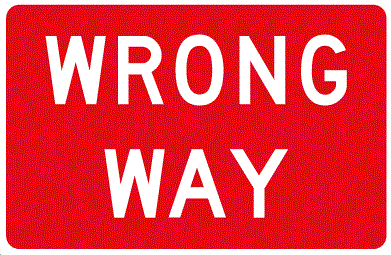
Around midnight on a December night, a Freightliner headed westbound on I-20 near the Alabama-Georgia border was hit head-on by a wrong-way Toyota Camry, killing the 42-year-old driver. We were a few miles ahead and almost hit, then pulled off and called the Highway Patrol; the crash had already occurred. The remainder of our near-miss stayed with us until our daughter arrived home, and I can only imagine the driver’s emotions, unable to avoid the crash.
Wrong-Way Crashes: More Common Than You Think
We looked into the wreck the next day and were astonished that the frequency of wrong-way collisions was much higher than expected. According to the AAA Foundation for Traffic Safety, there were 2,008 deaths from wrong-way driving crashes on divided highways between 2015 and 2018, an average of 500 deaths yearly (up 34% from 2010-2014). To address the problem, AAA and NTSB recommend alcohol-ignition interlock devices, high-visibility enforcement, and more-visible traffic signs and signals that follow national standards. Some states have turned to new technology to address wrong-way drivers.
Arizona
Arizona’s I-17 Pilot Program is the first in the nation to track wrong-way vehicles in real-time. The 15-mile stretch between I-10 and State Loop 101 features thermal cameras for detection, ADOT dispatchers and DPS troopers for visual verification, and enhanced warning signage with oversized static signs, lowered fixed signs, and illuminated signs with flashing red LED lights. The pilot project has detected over 300 wrong-way vehicles on I-17 since 2018, though funding for expansion has yet to be found.
Connecticut
Connecticut will roll out wrong-way warning tech in 2023 to mitigate wrong-way driving crashes. At an event demonstrating the effectiveness of LED-flashing tech, CTDOT Commissioner Joe Giulietti said this year had seen 22 wrong-way fatalities, exceeding the number from the previous three years combined. In July, the state approved $20 million in funding for wrong-way mitigation measures and will launch a pilot program at 16 high-risk ramp locations in 2023.
Nevada
Nevada’s wrong-way driver alert system uses radar and closed-circuit cameras to detect wrong-direction vehicles, activating two flashing wrong-way signs on the ramp. As an additional indication, the first set of signs stands four ft. high (instead of the standard seven ft.) to more readily reach the lower eye level of sleepy/impaired drivers.
Oklahoma
The Oklahoma Department of Transportation started a $2.3 million pilot program to address wrong-way drivers on I-40 between Oklahoma City and the Arkansas state line, including improving signs and striping at four interchanges and radar and thermal sensors to trigger blinking LED warning signs. Florida, Massachusetts, Nevada, North Carolina, Rhode Island, and Texas are other states testing similar technology. After a scare last holiday season, where the only fatality was the wrong-way driver, technology is being used to detect and hopefully stop wrong-way drivers before they kill someone.
Sources: https://www.truckinginfo.com/10188654/what-states-are-doing-about-wrong-way-crashes











Leave a Comment